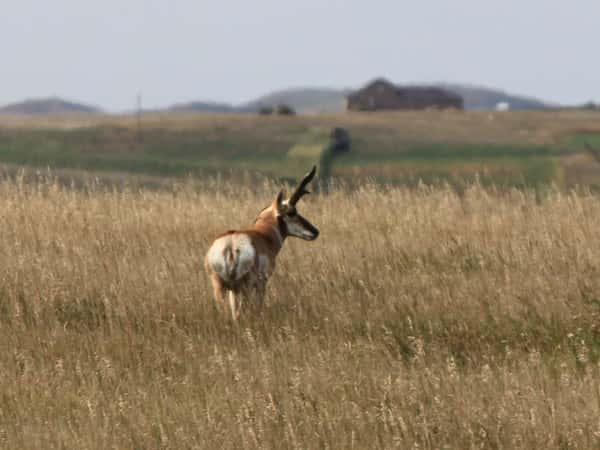
Prospects Improved for Pronghorn Firearm Season
By Nick Simonson
With the 2019 North Dakota Pronghorn Firearms Season set to open at noon on Friday, Oct. 4, and an increase to 1,335 tags issued by the North Dakota Game & Fish Department (NDG&F) this year, management specialists with the agency and hunters are excited about the prospects after the animals’ long recovery since the harsh winters of 2008 through 2010 knocked their populations back in the western portion of the state.
“It’s been a long time coming since those winters,” said Bruce Stillings, Big Game Management Supervisor with the NDG&F, “things have slowly been rebounding since about 2013 and hunters this year should see good numbers of animals on the landscape,” he continued, adding that while the herd sizes are up, hunters will have to search out the pockets that hold good populations of pronghorn.
Spurred by increases in overall pronghorn totals throughout the western portion of the state which represents the easternmost edge of the animals’ national range, the NDG&F’s summer surveys for units in the west and southwest remained good in terms of both density and buck-to-doe ratio, which was approximately 38-to-100 throughout all surveyed units.
Pronghorn prevalence increased in the northwest as well to the point where the agency could justify the re-opening of two units – 10A and 1D – located near Watford City and Williston. With 40 and 115 licenses issued for those respective units open for the first time in a decade, Stillings suggests the potential is there for some large bucks to be taken by hunters lucky enough to snag a tag in the northern badlands region, even with the rut wrapping up this time of year.

“Those are both units that are going to contain some really nice and some older-aged animals, some definite higher-quality individuals,” he commented, “those that were lucky enough to draw that license, they have a really good opportunity to find a better-than-average buck,” he concluded.
Even with the upward swing in populations, concern remains for the state’s pronghorn populations as a bad shift in the weather could combine with continued habitat loss and other factors to set things back on the eastern fringes of the animals’ home area. Development throughout the badlands in relation to the continued oil boom and the increased activity, construction and development of structures have a negative impact on pronghorn herds in that region.
In addition to the creation of roads and the opening of lands that were previously hard to access by human activities and industrial development, Stillings addresses the impact that fencing has on the well being of the state’s pronghorn herd.
“When animals are reliant on making large-scale movements to access open forage in the winter, fencing and highways can really impede pronghorn movements and cause some really major population declines and large-scale mortality events,” Stillings explained, “we encourage ranchers or any new fencing [to] keep that lowest wire at least 16 inches above the ground, and ideally it would be a smooth wire,” he continued, offering suggestions to help pronghorns more easily navigate under the man-made boundaries, while still effectively containing livestock in grazing areas.
Nearly 13,000 hunters applied for pronghorn licenses this year in the resident-only lottery, with a successful draw rate of about 10 percent. A unique tag, it allows hunters to pursue pronghorn with the bow from noon on Aug. 30 until Sept. 22 in the indicated hunting unit, and if not filled, the same can be utilized for the firearms season from noon on Oct. 4 through Oct. 20 in that unit.
Last year the NDG&F issued 1,065 tags in 10 units open solely to resident hunters.

